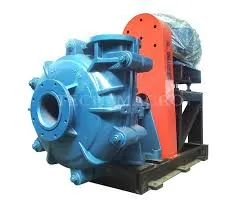-
 support@minemaxx.com
support@minemaxx.com
-
 0086-311-87833311
0086-311-87833311
 NO.8 JIHENG STREET,QIAOXI DISTRICT,SHIJIAZHUANG,HEBEI,CHINA
NO.8 JIHENG STREET,QIAOXI DISTRICT,SHIJIAZHUANG,HEBEI,CHINA
Efficient Wastewater Sludge Pumps for Enhanced Treatment and Environmental Protection
Understanding Wastewater Sludge Pumps The Unsung Heroes of Wastewater Treatment
In the world of wastewater treatment, the importance of efficient sludge management cannot be overstated. Wastewater sludge pumps play a crucial role in this process, acting as the backbone that ensures the effective transport and handling of sludge generated during wastewater treatment. This article provides an overview of wastewater sludge pumps, their types, applications, and the critical innovations that are shaping their evolution.
What is Wastewater Sludge?
Wastewater sludge is the residual byproduct of the treatment process used to remove pollutants from sewage and industrial effluents. It contains organic matter, microorganisms, heavy metals, and various other contaminants. Proper disposal or treatment of sludge is essential, as it can cause environmental hazards if not managed correctly. Sludge management involves several processes including thickening, digestion, dewatering, and final disposal, each requiring reliable pumping solutions.
The Role of Sludge Pumps
Sludge pumps are specifically designed to handle the unique challenges posed by wastewater sludge. Unlike regular water pumps, they must cope with the high viscosity, solid content, and corrosive nature of sludge. These pumps facilitate the movement of sludge between various treatment stages and ensure that it is transported to treatment or storage facilities efficiently.
Types of Sludge Pumps
1. Progressive Cavity Pumps These pumps use a helical rotor that progresses through a stator, effectively moving sludge with a consistent flow and minimal pulsation. Their ability to handle varying concentrations of solids makes them suitable for a range of sludge types.
2. Submersible Pumps Typically deployed in collection tanks, submersible pumps are designed to operate while submerged in the sludge. They are highly efficient, easy to maintain, and can handle both solids and liquids, making them a popular choice in treatment plants.
3. Diaphragm Pumps Ideal for viscous or shear-sensitive materials, diaphragm pumps operate by creating a vacuum that lifts the sludge. They are particularly useful in applications where the sludge is mixed with gases or requires careful handling.
wastewater sludge pumps

4. Centrifugal Pumps These pumps operate based on the principle of centripetal force. While they are widely used in many pumping applications, special designs adapt them to handle sludge more effectively.
Applications
Sludge pumps are used across various stages of wastewater treatment, including
- Dewatering Removing excess water from sludge to reduce its volume for transport and disposal. - Digestion Moving sludge into anaerobic or aerobic digestion systems where microorganisms break it down, producing biogas. - Thickening Concentrating sludge to reduce its volume before further treatment or disposal.
They are also involved in transporting sludge to landfills, agricultural applications, or to be processed into fertilizers.
Innovations in Sludge Pump Technology
As the wastewater treatment industry evolves, so do the technologies associated with sludge pumps. Key innovations include
- Smart Pumping Systems Incorporating IoT technologies, these systems monitor sludge properties in real-time, optimizing pumping efficiency and reducing downtime. - Energy-Efficient Designs New materials and designs are focused on reducing energy consumption, which is a significant operating cost in wastewater treatment. - Enhanced Durability Advanced coatings and materials are being developed to improve corrosion and wear resistance, thereby extending the life of sludge pumps in challenging environments.
Conclusion
Wastewater sludge pumps are vital in ensuring the efficient treatment and management of sludge, a byproduct that poses significant environmental challenges if not properly handled. With diverse types designed for specific applications and continuous advancements in technology, these pumps not only enhance operational efficiency but also contribute to more sustainable wastewater management practices. As urbanization and pollution pose increasing challenges to wastewater systems globally, the role of sludge pumps as unsung heroes in the fight for a cleaner environment will only become more critical. Understanding their operation and ongoing innovation can help stakeholders make informed decisions towards improving wastewater treatment processes and sustainability.
-
Wet Parts for Optimal PerformanceNewsOct.10,2024
-
Vertical Pump Centrifugal SolutionsNewsOct.10,2024
-
Top Slurry Pump ManufacturersNewsOct.10,2024
-
The Ultimate Guide to Centrifugal Pump for SlurryNewsOct.10,2024
-
Pump Bearing Types for Optimal PerformanceNewsOct.10,2024
-
A Guide to Top Slurry Pump SuppliersNewsOct.10,2024
-
Slurry Pump Parts for Optimal PerformanceNewsSep.25,2024

